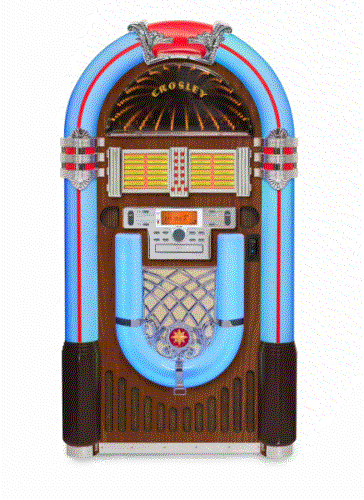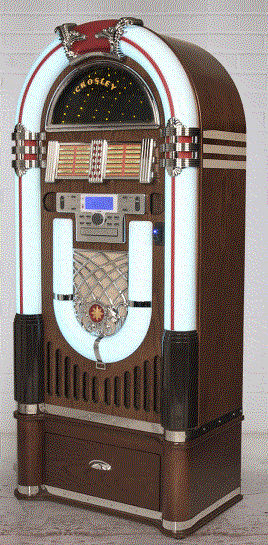.
HISTORY OF JUKEBOXES
The jukebox had its beginnings in the early 1900s when a coin mechanism was added to the phonograph. Soon thereafter a mechanism were devised to accommodate multiple records. Most of the early systems played the records sequentially just like the coin operated music box, player piano, or the nickelodeon.
The real beginning, however, of the modern jukebox occurred in the early 1930s with the perfection of the selection mechanism that allowed listeners to select the record they wanted to hear. During the 1930s, four companies dominated the market: the Rudolph Wurlitzer Company, the Rockola Manufacturing Company, AMI Inc., and the J.P. Seeburg Company. The 1930s jukeboxes played 10, 12, or 16 records, had wood cases and a flat top. In the late 1930s, remote selectors were added.
In the 1940s, jukeboxes played 24 records, contained illuminated plastics and were designed with round tops. Today, these jukeboxes are today highly desirable with collectors and, of course, are the most expensive.
In 1947, Seeburg introduced a new record changing mechanism that held 50 records and played both sides thereby being able to offer 100 tunes from which to select from. Seeburg also designed its new jukeboxes to use the 45 rpm disc exclusively. The designs also reflected the times, with sleek and extensive use of aluminum. Seeburg dominated the jukebox market in the 1950s.
Additional information on jukeboxes can be found in the following books: Vintage Coin Machines by Dick Bueschel; and Jukebox Art by Chris Pearce.
Copyright: 1996 Ken Durham.
.
Go back to 

